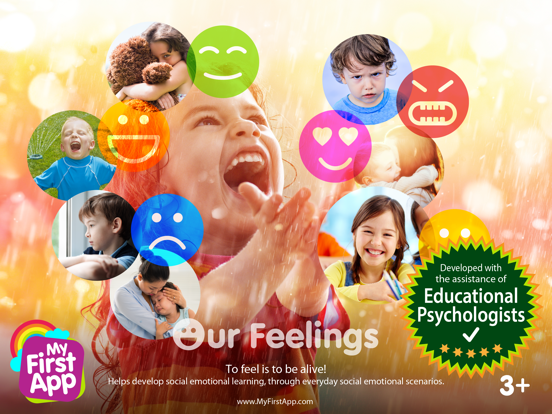
Adhd & autism feelings therapy
Feelings - to feel is to be alive. Each life event involves feelings. We learn and develop our emotional world and the understanding of feelings through interaction with others. First of all with our primary care-givers, and gradually with others. From womb to tomb, it is a lifelong process of development and change.
Feeling recognition and understanding is an important building block of the world of emotions. For most people, feeling recognition in self and others is a natural, gradual process, which develops through interaction with others. However, for some, this process involves difficulty and therefore requires special intervention and daily training.
‘Our feelings’ is a game that addresses just that. It is a tool which helps develop social emotional learning. It includes 108 scenes depicting every day social emotional situations. It enables the child to learn feeling recognition and appropriate behavioral reaction to each situation. Thus, this tool allows gradual cognitive training and learning of our ever so complicated world of feelings and emotions.
As previously stated, the emotional world develops through interactions, this game too, should be played in interaction with others, namely with a care-giver, a teacher or therapist. The scenes provide a trigger for discussion and learning with the child.
The game includes a tracking screen, summarizing the child’s reactions, which assists in focusing further work goals.
The game is suitable for children age 3 and up. It is especially suitable for children in need of special Learning and assistance in communication, social and emotional learning.
How to play:
The game includes 108 scenes involving 9 basic emotions: happiness, sadness, anger, fear, surprise, disgust, love, excitement and shyness. The scenes appear randomly or by choice in the setting screen.
Each scene includes 4 leading questions:
What do you see in the picture?
What do you think he/she feels?
What does the scene make you feel?
What do you think can be done?
Three of which require the child’s answers. The answers are depicted as emotional icons, organized in a row at the bottom of the screen to be chosen and dragged onto the scene. For each scene the child chooses one prominent emotion (naturally, there is more than one appropriate answer).
The child’s answers are summarized continuously and therefore can be followed and analyzed by the adult. The tracking screen can be reset at any given time.



